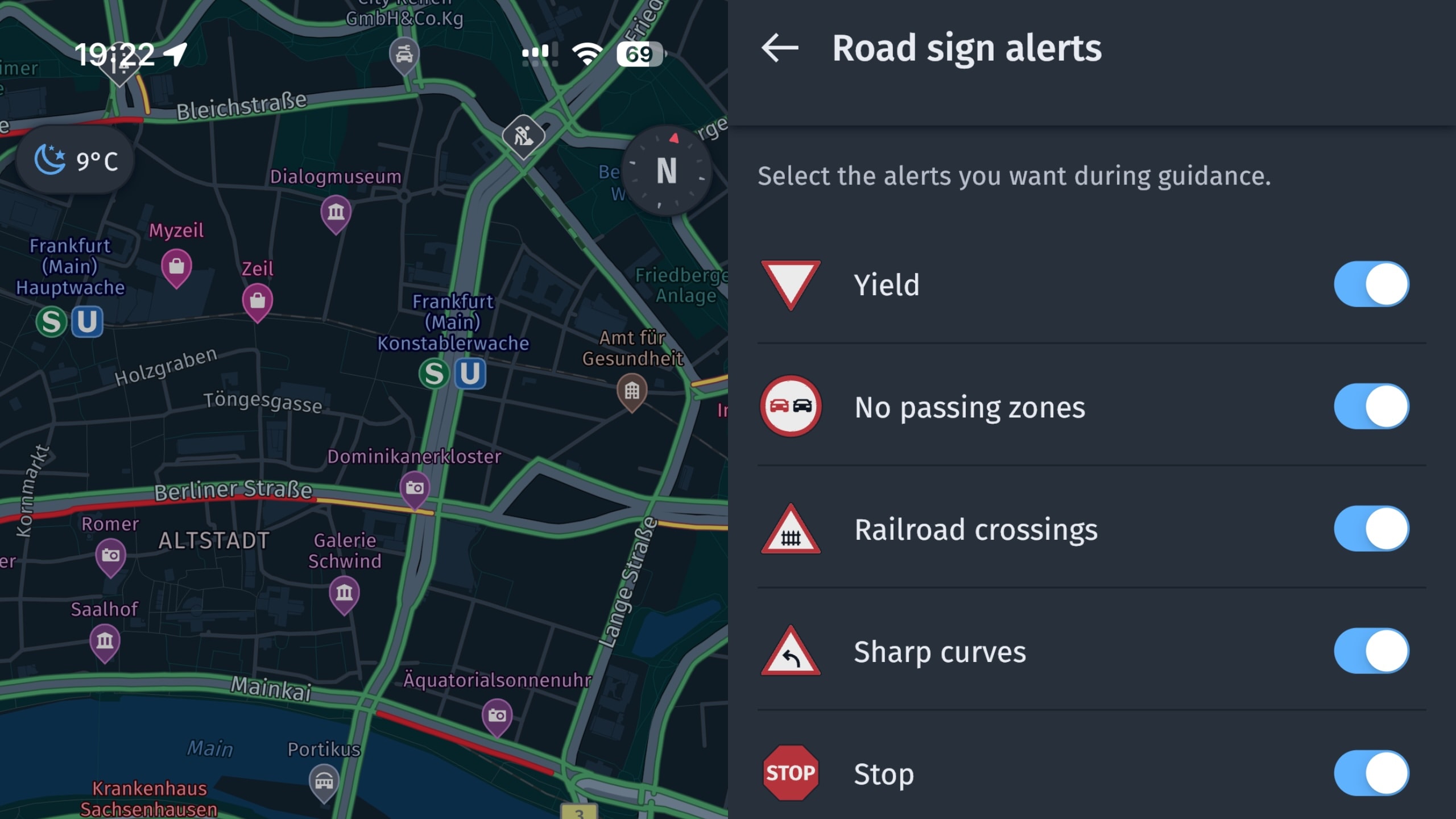Although Google Maps dominates navigation in the United States, alternative navigation apps in app stores shouldn’t be overlooked. HERE is a major player in the navigation space, already pre-installed on millions of vehicles. Its mobile navigation apps continue to improve, with the latest WeGo update introducing a crucial driving feature.
HERE has enhanced its mobile navigation solution with road sign support. The app can now display essential road signs as you approach them, providing more time to react and slow down. This feature enhances predictability while driving, especially on unfamiliar routes.
HERE WeGo shows the next road sign along with the remaining distance, allowing drivers to anticipate upcoming road conditions. The app lets users customize which signs to display during navigation. Options include yield, no passing zones, railroad crossings, sharp curves, stop signs, and winding roads.

While HERE WeGo isn’t the first app to implement this concept, it’s the first to offer real-time alerts while driving and supports a wide range of road signs.
Apple Maps already displays stop signs on the map without notifications, and Google Maps indicates traffic lights, while Waze warns about railroad crossings and sharp curves.
The new feature can be found in HERE WeGo’s settings under “Road sign alerts.” The latest update also introduces parking suggestions. Parking can be challenging, especially in crowded cities, so apps like Google Maps and Waze offer assistance in finding nearby parking spots and navigating to them upon arrival.
HERE takes a different approach by providing parking suggestions at the end of your trip. If you’re unable to find parking at your destination, the app suggests nearby spots. This feature, enabled by default, is available in the latest version under “Parking suggestions” in the app settings and supports cars and motorcycles.
While I tested the latest HERE WeGo version and didn’t receive road sign alerts, colleagues in other European countries have, indicating regional availability. It’s likely that broader support for these alerts will roll out gradually.

